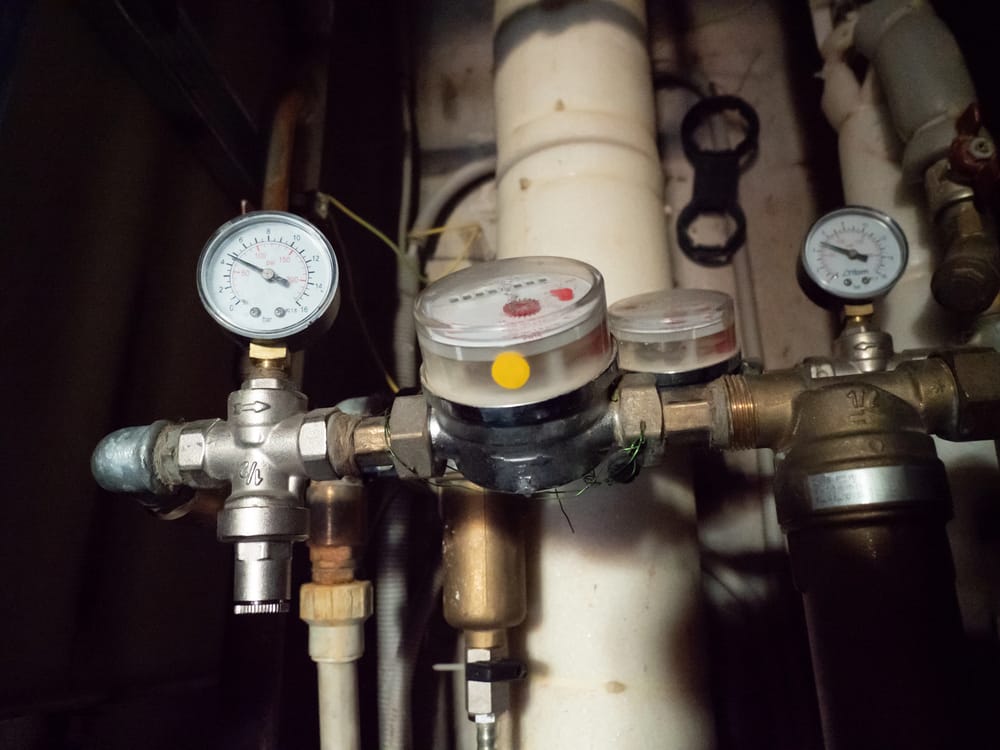
A pilot light quietly works behind the scenes to ensure your home has hot water when you need it most. This small but mighty flame serves as the ignition source that lights the main burner, which in turn heats the water for your showers, dishes, and laundry. Without it, your water heater can’t do its job, leaving you stuck with cold water and feeling a whole lot of frustration.
Whether it’s your water heater, furnace, or another appliance, knowing what a pilot light does and how to address issues when it doesn’t stay lit can save you from danger, unexpected cold spells, and costly repairs. In this article, we’ll cover how the pilot light works and what to do in case it’s not working properly.
Locating The Pilot Light On Your Water Heater
Most natural gas-fueled water heaters have the pilot light tucked away at the base of the unit, just beneath the gas valve.
Start by opening the access door or panel to the burner chamber. This will usually be near the bottom of the unit. You’ll see the pilot light’s flame, which should be a steady, small, blue flame. If the flame is out, it means the pilot light needs to be re-lit.
Inside the access panel, you’ll notice a few important pieces:
- The Pilot Tube: This thin gas pipe delivers natural gas to keep the pilot ignited and ready.
- The Thermocouple: This safety sensor checks if the small flame is burning. If not, it shuts off the gas to prevent a gas leak.
- The Igniter Button: On many modern gas-fired appliances, this button provides the spark to re-light the pilot light.
If your unit doesn’t have an igniter button, grab a long match or a stick lighter to carefully ignite the flame manually.
Pilot Light On Modern Appliances
These days, pilot lights are becoming a thing of the past. While older furnaces and water heaters relied on pilot lights to stay lit 24/7, most newer models have ditched this constant flame for more energy-efficient solutions. Instead of burning gas continuously, modern appliances use an electric igniter, like a piezoelectric spark, to light a pilot only when heat is needed.
This prevents gas waste that comes from non-stop burning, which adds up to energy costs. Electric igniters tap into electrical current to generate a spark that instantly ignites the burner for more precise and efficient heating.
Many appliances that do have pilot lights now have modern safety enhancements, including advanced sensors to detect flame activity:
- A photo-resistor monitors the flame’s glow.
- A thermometer detects the heat it produces.
- A voltmeter tracks the electrical current generated by the flame warming the thermocouple.
These sensors ensure the system shuts off the gas flow if the flame is extinguished, adding another layer of safety.
Pilot Light And Safety
About two-thirds of Canadians in 7.6 million locations, including homes and businesses, use natural gas across the country. This makes pilot light safety an important topic to understand.
A well-functioning pilot light burns with a steady blue flame. If the flame appears yellow or orange, it signals potential issues, such as dirt or corrosion, and requires immediate attention from a professional. A malfunctioning thermocouple can also pose risks.
If the thermocouple doesn’t respond quickly, gas can continue to flow, creating the possibility of a leak, or worse, an explosion when attempting to re-light the flame.
Also, if you smell gas, never attempt to light a pilot. Instead, vacate the area, open windows and doors, and call your gas company or emergency services. A strong “rotten egg” odour caused by an additive in natural gas is a clear sign of a leak. For routine safety, schedule annual inspections of your gas appliances to ensure the thermocouples, valves, and burners are working as intended.
Energy Waste Of The Pilot Light
A pilot light wastes a significant amount of energy over time. Older furnaces and water heaters with standing pilot lights consume around 14,000 BTUs of energy daily—equivalent to approximately 0.015 gigajoules (GJ).
This constant energy draw drives up your power bill. By generating heat in areas that don’t need it, like utility rooms or basements, a continuously burning pilot light forces your cooling systems to work harder, especially during warmer months. For instance, the extra heat load in the home can increase the demand for air conditioning, which uses electricity to offset the unnecessary warmth created by the pilot light.
Conclusion
A pilot light ignites the burner in gas-powered appliances but unfortunately comes with wasted energy and safety risks. If your pilot light goes out frequently, it can lead to gas leaks or even the risk of an explosion. These issues are potentially dangerous and require immediate attention from a professional.
For reliable water heater repair in Winnipeg, trust the experts at Provincial Heating and Cooling. With 24/7 service and decades of experience, our certified technicians are ready to tackle any issue safely.

